-
-
Post
WWI northern migrations
-
-
Important
writers of the Harlem Renaissance
-
-
|
|

New York Artists
After World
War I, African Americans who had been fighting overseas returned to America
to find work. Many of them had been exposed to new cultures and attitudes
towards non-white people. They returned expecting recognition and employment
for their war contributions. Instead they encountered a racial backlash that
was a resurgence of anti-black sentiment from the reconstruction period.
There were
violent race riots in several parts of the South
and the Midwest including Arkansas, Kansas, Florida, and Chicago.In addition,
lynching became more prevalent. African Americans began to migrate to Northern
cities where they competed with Whites for jobs. Harlem was one of the major
destinations for new African American migrants. Once a small suburban enclave
for domestics, its boundaries quickly expanded to include almost 12% of the
African American population.
Much of
the intellectual impetus of the Harlem Renaissance came from a man named William
Egbert Burghart Dubois and his associates. W.E.
B. Du Bois was the first black graduate from Harvard
University.
His influence upon the African American community was phenomenal. He founded
the NAACP, published Crisis Magazine and popularized the idea of the "talented
tenth." He believed that a small percentage of the African American population
who were exceptionally skilled should be designated and educated as artistic
and cultural leaders. He proposed absolute equality for the "talented tenth"
and technical training for the black masses.
The antithesis
to W.E.B. Du BoisÕ political stance was the work of Booker
T. Washington who urged African American to move towards accommodation
and hard work for economic gain. He promoted widespread training in service
occupations such as agriculture and specialized trades.
Du Bois
was very active in writing, publication, and the arts. He founded a theater
called Krigwa Little Theater in 1926. Du Bois believed that African American
theater should be About, By, For, and Near Blacks. He published the writings
of African American writers in his magazine and encouraged White patrons to
support the work of African American artists.
Some of
the important writers to emerge from the Harlem Renaissance were...
|
|
|
|
|
Jean
Toomer
Her
skin is like dusk,
O canÕt you see it
Her skin s like dusk
When the sun goes down
|
Claude
McKay
If
we must die,
let it not be like hogs
Hunted and penned in an inglorious spotÉ.
Like men weÕll face the murderous, cowardly pack
Pressed to the wall, dying, but fighting back
|
James
Weldon Johnson
Lift
evÕry voice and sing,
Till earth and heaven ring,
Ring with the harmonies of Liberty;
|
|
|
|
|
Langston
Hughes
To
fling my arms wide
In some place of the sun
To whirl and to dance
Till the white day is done
Then rest at cool evening
Beneath a tall tree
While night comes on gently
Dark like meÑ
|
Zora
Neale Hurston (folklorist)
I
got up this morning, and I knowed I didnÕt want it
Yea! Polk County!
You donÕt know Polk County like I do
Anybody been there, tell you the same thing too.
Eh, rider, rider!
Polk County, where the water tastes like cherry wine.
|

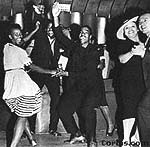 The
Harlem literary renaissance was an elitist movement led by about twenty writers,
yet their work spawned an explosion of interest in Harlem by both Whites and
Blacks. During the time of the Harlem Renaissance musicians, dancers, and
other flocked to Harlem to participate in club and night show activity. This
was the time of the Cotton Club and SmallÕs ParadiseÑestablishments where
White clientele could be entertained by African American entertainers.
The
Harlem literary renaissance was an elitist movement led by about twenty writers,
yet their work spawned an explosion of interest in Harlem by both Whites and
Blacks. During the time of the Harlem Renaissance musicians, dancers, and
other flocked to Harlem to participate in club and night show activity. This
was the time of the Cotton Club and SmallÕs ParadiseÑestablishments where
White clientele could be entertained by African American entertainers.
Zora
Neale Hurston emerged in the midst of the Harlem Renaissance as an eccentric
artist from Eatonville, Florida. She was a folklorist and writer who dedicated
herself to researching and reconstructing African American language, customs
and culture. She studied at Barnard College with anthropologist Franz Boas
and wrote several essay that document customs and culture. She also wrote
short stories and novels; the most famous is Their Eyes Were Watching God.
Hurston
was a part of the Harlem Renaissance community, but she was not well liked
by many of the artists. They laughed at her eccentric folksiness and her obvious
use of backwoods expressions and
|
|
Playing
at The Cotton Club
Clockwise:
Freddie Jenkins, Cootie Williams, Sonny Greer, Aurthur Whetsol, Jaun
Tizol, Wellman Braud, Harry Carney, Fred Guy, Barney Bigard, Joe Nanton,
Johnny Hodges, and Duke Ellington seated at the piano.
|
attitudes.
She. In turn, referred to the Harlem elite writers as the "niggerati" and
called white who patronized and supported the artists "negrotarians."
For class
we will be reading Spunk, a play by George C. Wolfe that is
an adaptation of one of Zora Neale HurstonÕs short stories. In this play characters
from the rural south are humanized through their interactions with one another.
When Wolfe adapted the play, he added narration and music that helped to create
the mood and atmosphere on the folkloric material. Later in the semester we
will be reading another play by Wolfe, The Colored Museum.
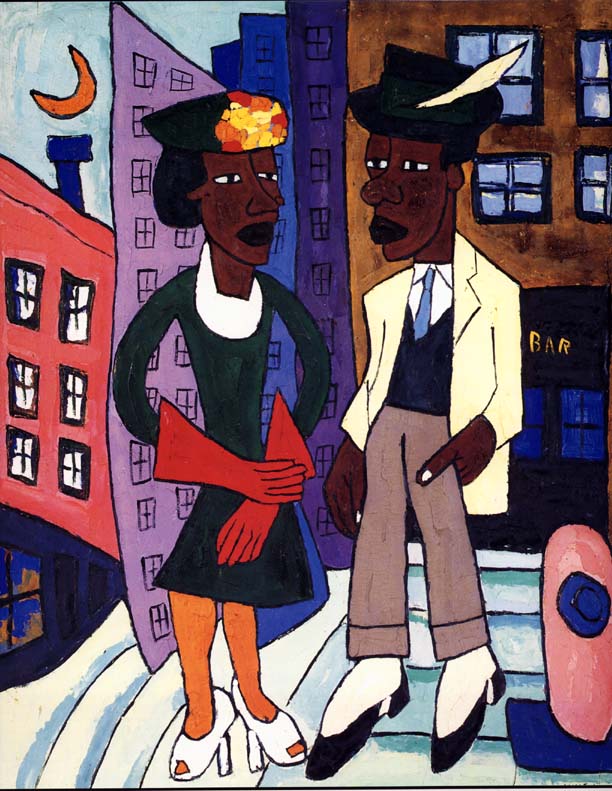


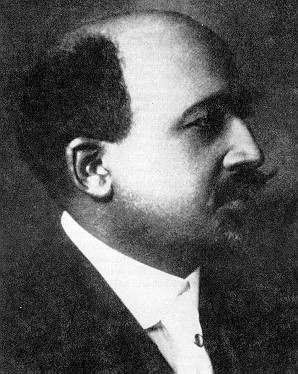
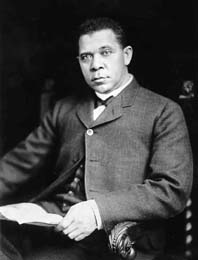
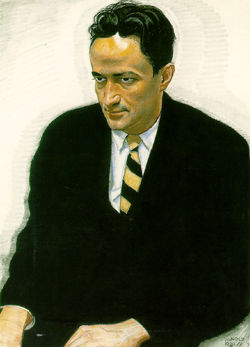
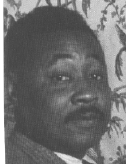
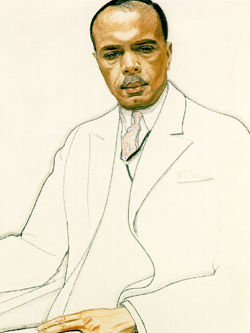
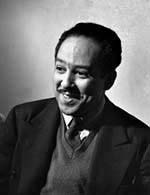
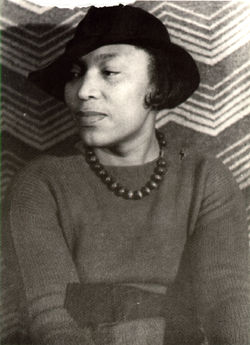

 The
Harlem literary renaissance was an elitist movement led by about twenty writers,
yet their work spawned an explosion of interest in Harlem by both Whites and
Blacks. During the time of the Harlem Renaissance musicians, dancers, and
other flocked to Harlem to participate in club and night show activity. This
was the time of the Cotton Club and SmallÕs ParadiseÑestablishments where
White clientele could be entertained by African American entertainers.
The
Harlem literary renaissance was an elitist movement led by about twenty writers,
yet their work spawned an explosion of interest in Harlem by both Whites and
Blacks. During the time of the Harlem Renaissance musicians, dancers, and
other flocked to Harlem to participate in club and night show activity. This
was the time of the Cotton Club and SmallÕs ParadiseÑestablishments where
White clientele could be entertained by African American entertainers.
